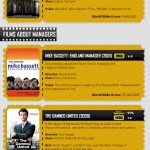Buying a Printer – Here are 8 Things to Consider
Working in a paperless office is not only great for office appeal and organization but also great for the environment. Unfortunately, we may be required to print papers once in a while from a printer rental kimberley. To most of us, printers look all the same, and it gets more stressful when shopping for the best—especially when going by popular brand names without more information may not be the smartest idea.
Always remember to check recommendations and any reviews from customers about the best brands.
Below are factors to consider when buying a printer.
1. What type of printer are you looking for?
There are two types of home/office printers; inkjet and laser printer. The laser printers are expensive compared to inkjet printers. Inkjet printers are best suited for home use since they are suitable for printing photographs. Laser printers are best suited for office use since they offer an output of high quality, especially when a lot of texts are needed. For more information about the difference between inkjet and laser printers, visit The Tech Quarters.
2. The image quality
Choose a printer depending on the quality of images you need. If you are a company that deals with designs that you show drafts to your clients, you need a printer with the best quality images. But if you are a company that sells with writing, then you don’t need a printer with the best image quality. It would be disappointing to purchase a printer with less image quality when you need high-quality images.
3. What extra features and functions does it have?
When you find a printer that performs more than one task, that’s a plus for an office printer. A printer that can fax, scan, photocopy, and print is beneficial to the office since it reduces the cost of buying those other machines, only a small space will get utilized, and work will be done fast around the office.
4. The speed
Speed is the most important factor that companies look for in office printers. Consider your workload; a faster printer can be used for such occasions. People in the office environment hate spending hours standing at the printer. That’s why a printer that can print significant texts within a short period is the best for the office environment. At home, speed isn’t necessarily important.
5. Connectivity
Are you the type obsessed with wireless connections, or are you the type who needs to see cables to believe that something works? Do you want to print from your handset device, or do you need a computer? It’s essential to consider this factor depending on the kind of work you do to avoid extra costs if you buy a printer that’s not suited for the sort of environment you intend.
6. Paper handling
Ask yourself the kind of paper you intend to use and the quantity for you to buy a printer that can do the job. For someone who wants to print on photo paper or cardstock, you will need a printer different from someone who wants to print on a regular blank page.
When it comes to quantity, some printers can’t handle a lot of work. It gets harder for them to manage a large number of printing papers in the paper tray and the out-tray. It means that someone has to be present to add more documents in the paper tray. For big companies, this can be time-wasting, so such companies should purchase printers with high capacity trays. For small businesses, printers with average capacity trays are best.
7. Home/office size
If you can work from anywhere with a laptop, think about buying a printer that can is portable. But if you have ample space and what needs printing is large, then invest in large printers. There are those who have large spaces but like portable printers.
8. The Price
It’s essential to have a budget for anything you want to purchase, not just printers. Price helps in knowing the kind of printer you can afford for your home/office. Once you know what you want in a printer, the budget is the last thing that should be in mind. You shouldn’t just focus on the printer’s price, but also cover the maintenance cost. Other significant expenses that play an essential role are paper and ink cartridge replacement.
Consider the brand of cartridges you intend to use, such as laser toner, inkjet cartridges, original equipment manufacturer, and remanufactured ink cartridges like the one offered by Yoyoink. Another manufacturer can’t make remanufactured ink cartridges since they are copyright. They are always well filled and less expensive since people who sell them set the prices themselves.
The ink cartridges itself play a big role in the price as well; some cartridges cost much less like the Canon CLI-42 Ink Cartridge; These are compatible high yield ink cartridges at a fraction of traditional OEM cartridges and can save a lot of money yet deliver the exact same quality.









![How to Create Engaging Content – 6 Steps to Follow [Infographic]](https://technofaq.org/wp-content/uploads/2017/10/6_Steps_to_Follow_on_How_to_Create_Engaging_Content-150x150.png)






